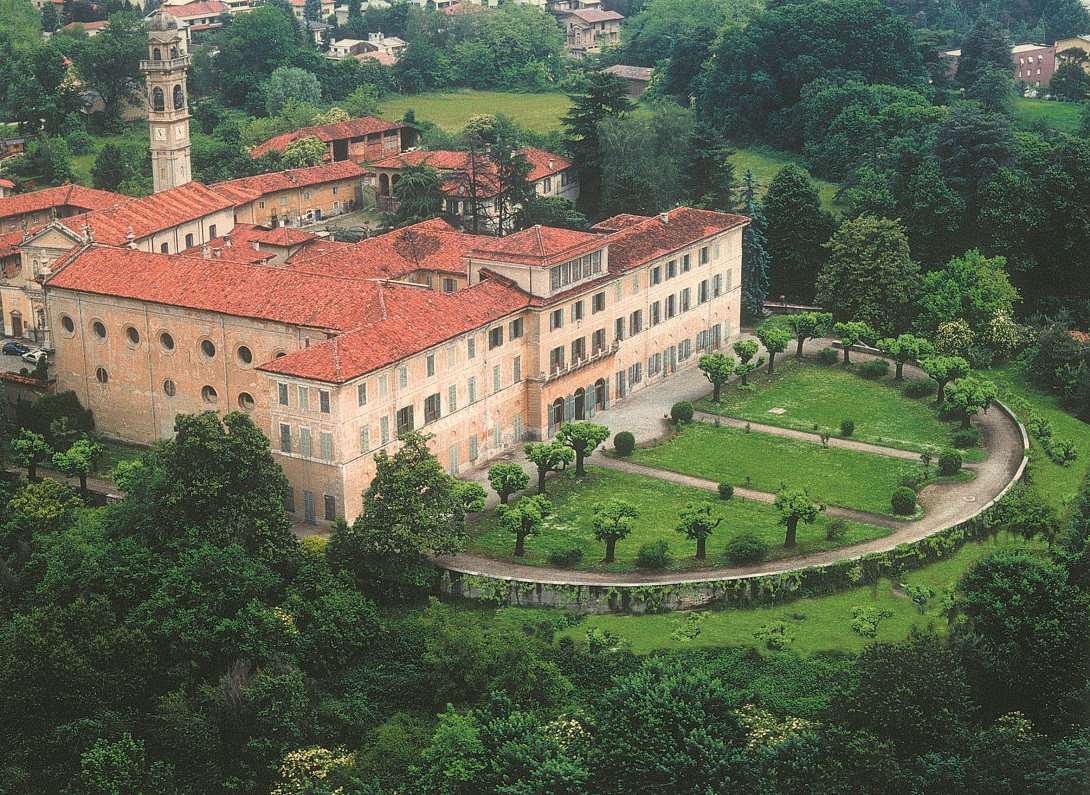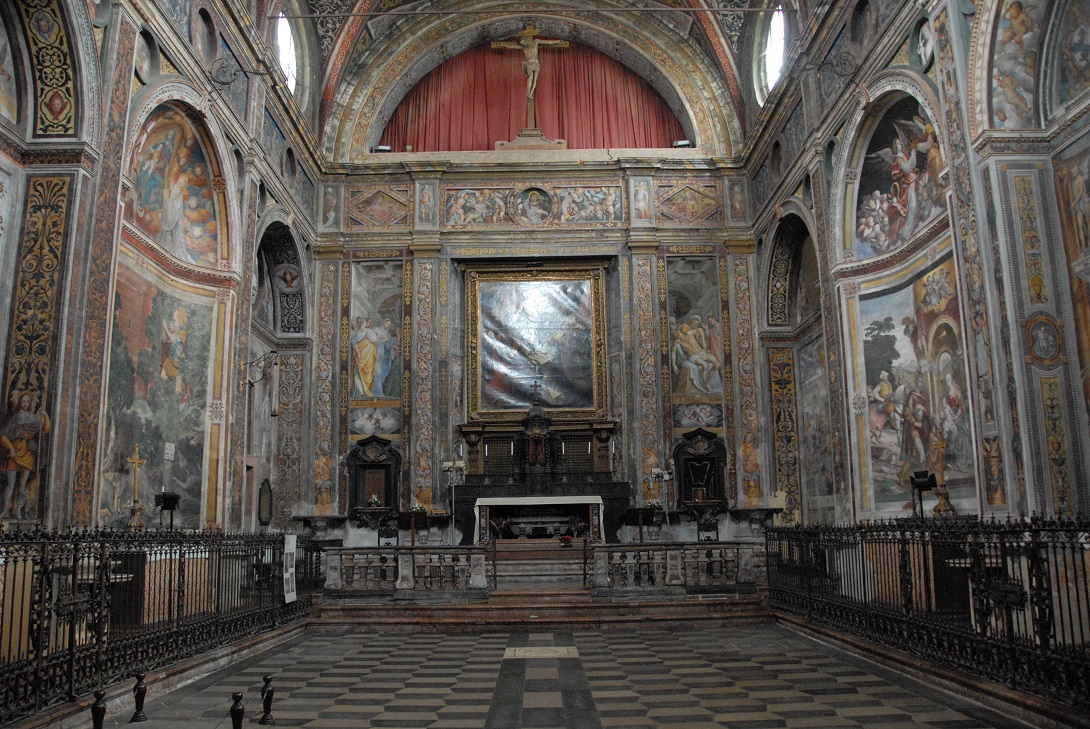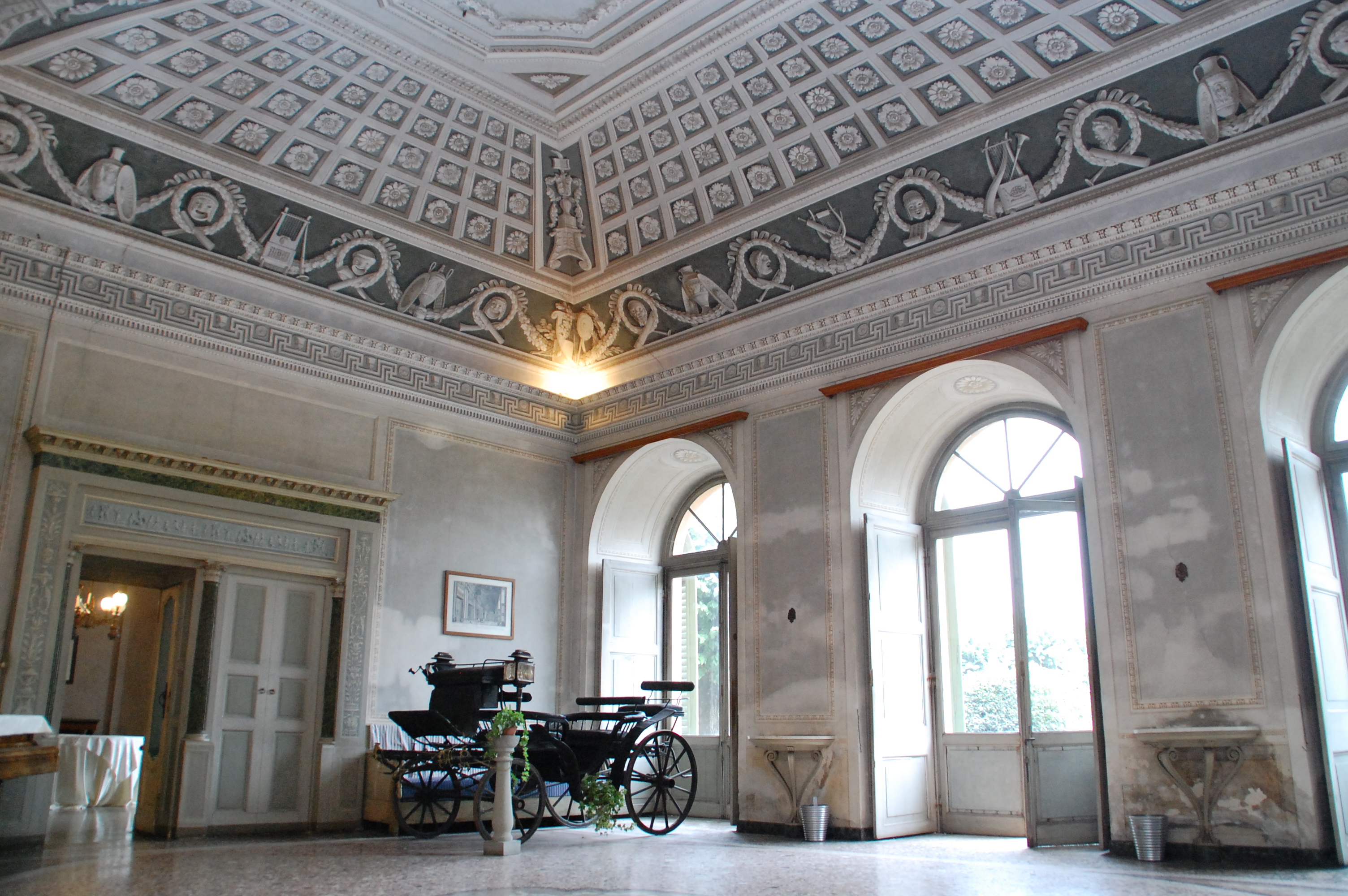The female Benedictine monastery of San Vittore was founded at the beginning of the ninth century, around the year 830, by two illustrious figures, Aimone and Vermondo of the Manfredingi family (a great feudal family of northern Italy) to fullfil a vow made to the Virgin . A century after their death the two were numbered among the saints and their remains are still kept in a sumptuous urn located under the altar of the Church of San Vittore.
The monastery was already rich with important feudal rights on Meda and surroundings towns like Cabiate, Novedrate, Cimnago, Farga. In the year 1194, as historian Bernardino Corio recounts, the monastery hosted the emperor Henry VI coming from his native Germany and accompanied by the famous bride Costanza d’Altavilla, already pregnant with future emperor Federico II.
But time was changing and the establishment of the free Commune imposed important renunciations on the monastery. In 1252 the abbess of the Monastery, Maria da Besozzo, renounced the main feudal rights over Meda and recognized the statutes of the municipality, while preserving all the ecclesiastical rights for the monastery.
Although weakened, the Monastery remained rich in the following centuries and in 1496 it witnessed the meeting between the Emperor Maximilian of Habsburg and the Duke of Milan Ludovico il Moro, in the presence of the legates of the major Italian states.
In the following century, although reformed and stiffened in the rules also due to the Counter-Reformation, the monastic life continued among the ancient walls, interrupted occasionally by the visits of the milanese archbishops including San Carlo Borromeo in 1581 and his nephew Federico in 1626 and those, likewise grandiose though less formal, of the wives of the governors of Milan.
The eighteenth century brings important innovations that are always harmful to monastic fortunes. The Monastery escapes from the suppression of Joseph II of Habsburg, but then succumbs to those far more radical by the Cisalpine Republic founded by the Napoleonic armies.
On 29 May 1798 a decree suppresses the millennial Monastery, the nuns are expelled and the assets are auctioned off.
Giovanni Giuseppe Maunier, a wealthy merchant of Marseilles and a supplier of the French army, will buy them in the following October. He will despise the famous monastic memories and commission the famous Viennese architect Leopoldo Pollack to transform the walls of the cenobium into those of a neoclassical villa. The rest of the monastery and the neoclassical villa were bought in 1836 by Giovanni Traversi and from him the complex passed to his nephew and then his descendants to the current owners, the Antona Traversi, who still conserve it.
But what particularly strikes even the most distracted visitor is the spirit that breathes all over the ancient walls, where it seems to relive a thousand years of our history.





